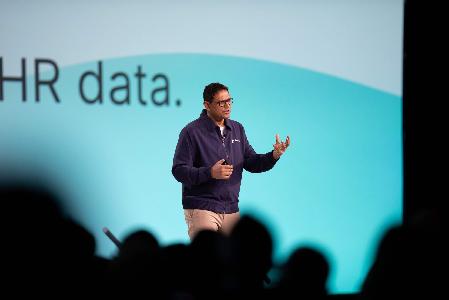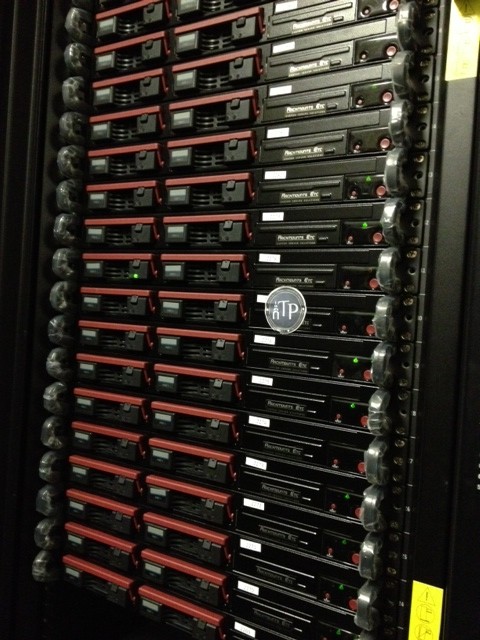
See the sticker? That’s where the words, code and photos that make up TechnicallyPhilly.com are stored. Unfortunately, it wasn’t an option to keep our sticker there indefinitely.
Last month, we went on a mission to find our little home on the Internet. Or, to be more precise, our server.
Admittedly, its location wasn’t exactly a secret — Technically Philly recently switched over to Callowhill-based data center Razor Servers — but we did venture through rows and rows of blinking servers to find ours.
Below, take a tour of Razor Servers’ data center.

Razor Servers moved to this building in Callowhill last summer, but you’d never know it. You have to be buzzed in and there are not many clues as to what else is in the building.
Founded in 2005 by Matt Kelly, Razor Servers hosts thousands of clients (Kelly declined to provide more specific numbers) but its facilities can hold up to tens of thousands of clients, Kelly said. The company has a local client base, Kelly said, but it also serves customers from 27 different countries.
Largely through our content management system WordPress, we upload and save Technically Philly content (these words we write and links we share) to that server, from where a new site visitor’s web browser recalls that information.

Razor Servers hosts 75 clients but its facilities can host up to 500, depending on the size of the server.
Most of its clients have dedicated servers (including us), but about 10 percent of its clients are on the company’s newly-offered cloud servers (where many different customers share a single server) and five percent of its clients use Razor Servers as a “colocation” facility. That means that a business has its own server but Razor Servers houses it for them. A business would want to do that because it takes a lot of work to house a server: you need to have an extensive cooling system and several backup power supplies in case of power failure. Razor Servers also has a server backup in another location in case of, say, a fire, but Kelly said he could not tell us where the backup was located because of security reasons.
The data center itself is a large room that’s half filled with tall, black boxes that are incessantly blinking their green lights. The constant blinking isn’t in tandem (each server seems to have its own rhythm, if you will) and it calls to mind a heart monitor, which might be why we felt like we were surrounded by living, breathing creatures. The room is also filled with the steady blare of the center’s large air conditioning system — servers must live in a cool environment, Kelly said.
Full Disclosure: As described above, Technically Philly is a client of Razor Servers.
Updated 11:02 a.m. 2/6/13: An earlier version of this article provided an incorrect count of how many clients Razor Servers had and how many clients Razor Servers could support.
Join the conversation!
Find news, events, jobs and people who share your interests on Technical.ly's open community Slack

Philly’s IT department fires long-tenured staff amid a high-level shakeup of priorities

Why is it so hard to find entry-level software engineering jobs?

Is AI really something new — or just the next big technology platform?



